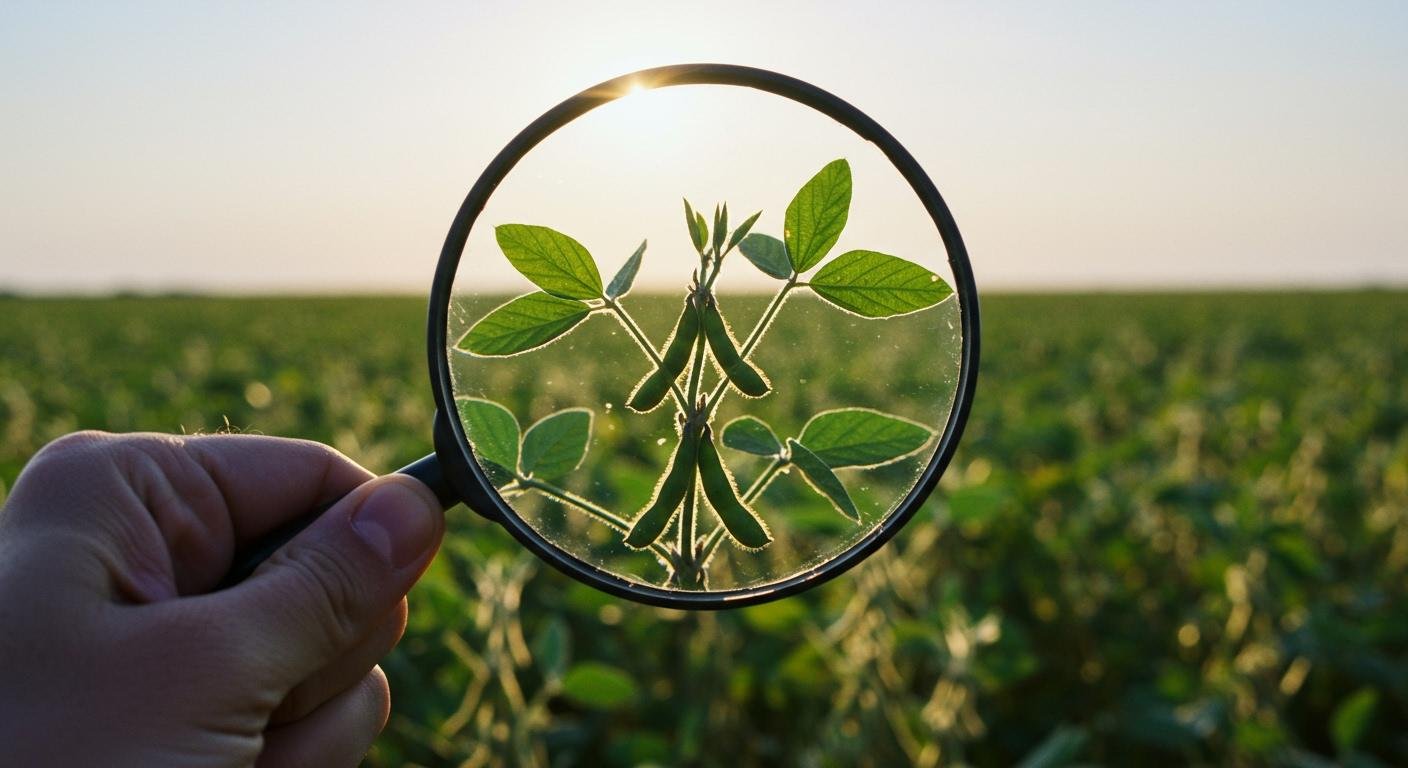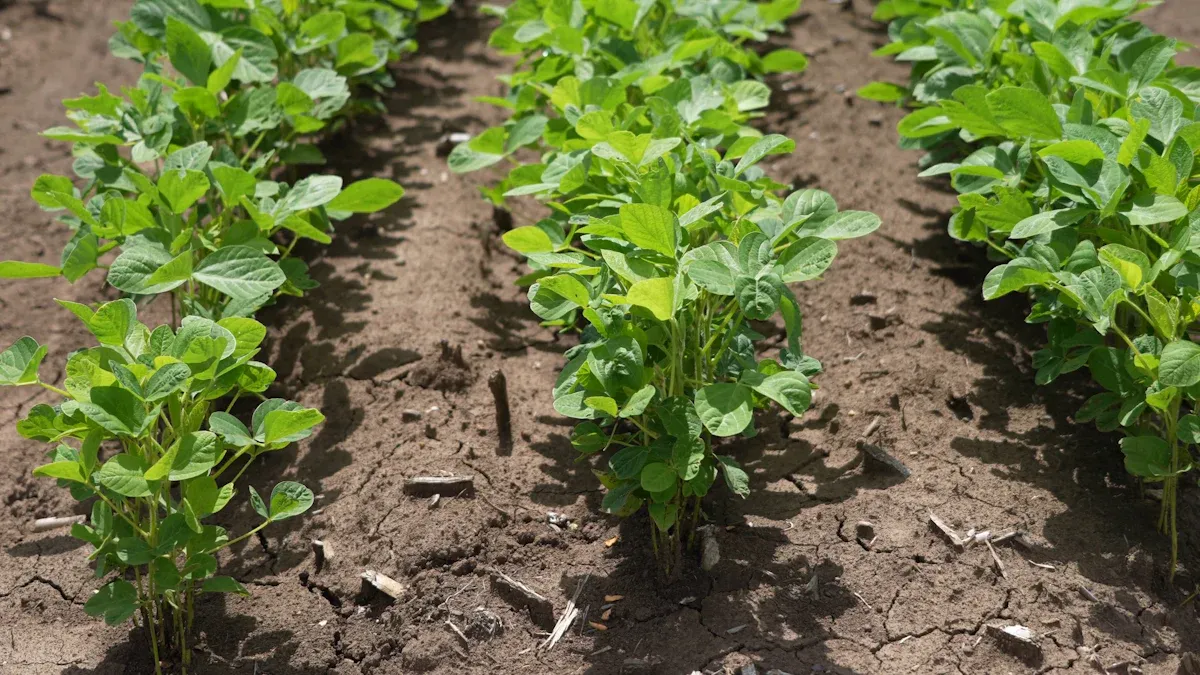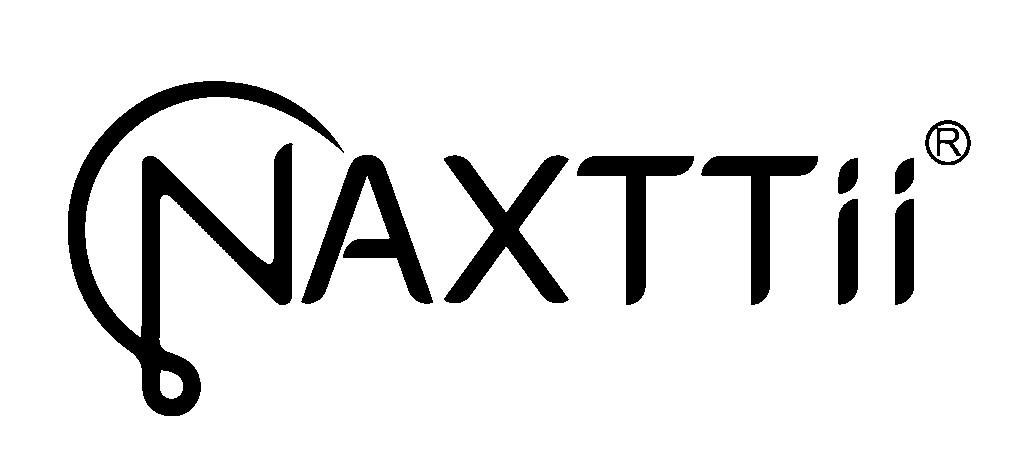Your Guide to Responsible Soy Sourcing Qs
Table of Contents

You want to make ethical choices for sustainable living. It is hard to know if products are truly ethical. Your questions are a powerful tool. Pressure from consumers makes companies adopt better sustainability practices. This guide helps you demand transparency. Use these questions to understand a brand’s approach to responsible soy sourcing.
Your Consumer Toolkit 🧰
- Is your soy deforestation-free?
- How do you trace your soy supply chain?
- Are your ethical claims verified by a third party?
- How do you ensure ethical labor and address soy in animal feed?
IS YOUR SOY DEFORESTATION-FREE?

This is the most critical question you can ask. The answer reveals a company’s core commitment to protecting the planet.
WHY THIS QUESTION MATTERS
Soybean agriculture is a major driver of deforestation. This expansion clears vital ecosystems. The Amazon rainforest and Brazil’s Cerrado savanna face immense pressure. Clearing these lands for agriculture causes massive biodiversity loss and environmental harm. For example, soy expansion in the Cerrado could destroy 3.6 million hectares of native vegetation by 2050. This destruction releases huge amounts of carbon into the atmosphere, worsening climate change. The conversion of natural landscapes for soy cultivation is a primary source of greenhouse gas emissions in producing countries. Protecting the environment means stopping this destruction. A company’s sourcing practices directly impact these fragile areas. Your question pushes for accountability and helps promote sustainable agriculture.
WHAT A GOOD ANSWER LOOKS LIKE
A simple “yes” is not enough. A truly ethical company provides specific, verifiable proof. Look for a detailed response that includes clear policies and actions.
A strong answer demonstrates a deep, ethical commitment. It goes beyond words and shows concrete steps to protect the environment.
A responsible brand will have:
- A Public Cut-Off Date: The company should commit to sourcing soy from land that was not deforested after a specific date. A common benchmark for ethical standards is December 31, 2020.
- Advanced Monitoring: Brands should use technology like satellite monitoring. These systems track land use changes in near-real-time. This helps verify that their soy is not linked to recent deforestation.
- Clear Sourcing Practices: The company should have strict standards for its suppliers. This includes addressing risks from indirect suppliers, where noncompliant soy can sometimes enter the supply chain. Their ethical practices should ensure all soy meets their deforestation-free policies.
GUIDING RESPONSIBLE SOY SOURCING
A company’s deforestation-free promise is only as strong as its ability to prove it. This is where traceability comes in. It is the key to unlocking an ethical supply chain.
THE ROLE OF TRACEABILITY
Traceability means knowing the exact journey of a product from its origin to the store shelf. Many companies lack this information for their soy. Their sustainability claims become difficult to verify. This lack of data makes businesses worry about being accused of greenwashing. The soy supply chain is very complex. Soybeans from hundreds of farms are often mixed together in shared silos. This makes tracking a specific batch back to a single farm very challenging. Without clear traceability, a company cannot guarantee its products are free from deforestation. Their ethical practices remain unproven. Consumers have a right to question these gaps.
WHAT CONSUMERS SHOULD HEAR
You should look for a company that demonstrates genuine transparency. An ethical brand can trace its soy back to the specific region or municipality of origin. The best companies can even trace it to the farm level.
Watch Out for “Credit” Systems ⚠️ Some companies buy “credits” to support responsible soy sourcing. This practice allows them to claim they are helping, but the soy in their actual products may not be certified. This is like an offset and does not guarantee the physical soy you buy is ethical.
A truly ethical company provides clear proof of its sustainable sourcing. It shows consumers real data.
- Published Supplier Lists: The company may share a list of its direct soy suppliers.
- Interactive Maps: Some brands, like Marks & Spencer, publish maps showing where their raw materials come from.
- Chain of Custody Transparency: They can explain the steps taken to keep certified soy separate from non-certified soy.
These practices show a real commitment. They give consumers confidence that the brand’s ethical promises are more than just words.
VERIFYING SUSTAINABLE SOURCING CLAIMS
A company can make many promises about its ethical practices. You need a way to confirm these claims are true. Third-party certification provides this proof. It offers an independent, expert review of a brand’s environmental and social performance.
THE POWER OF CERTIFICATION
Certification helps you separate genuine sustainability efforts from simple marketing. When an independent group verifies a company’s claims, it builds trust. Many consumers rely on these labels to make informed choices.
How Much Do Shoppers Trust Certification?
A recent study shows that on-pack logos have a real impact on consumer perception.
Consumer Perception Percentage Consider logos ‘completely trustworthy’ 27% Consider logos ‘somewhat trustworthy’ 42% Over half of global consumers say professional certification influences their product choices.
These programs validate that a company meets specific standards for its business practices. However, you should know that some certification schemes have limitations. They are a helpful tool but work best alongside strong legal requirements. An ethical company uses certification as one part of its overall commitment to sustainable sourcing.
KEY LABELS TO LOOK FOR
When you check a product, look for logos from respected organizations. These labels show that the soy has been certified against a set of strict standards. This is a key part of ethical sustainable agriculture. Here are three important labels in the soy industry:
- Round Table on Responsible Soy (RTRS): This is a comprehensive sustainable certification. The RTRS standards require zero deforestation and zero conversion of natural land. It also covers responsible labor conditions and good agriculture practices.
- ProTerra: This certification is well-known for its strong non-GMO stance. The ProTerra standards also protect biodiversity, ensure good labor practices, and respect worker rights. It is a strong sign of an ethical supply chain.
- Sustainable U.S. Soy: This label shows that the soy comes from the United States under a system of audited sustainable practices. It focuses on continuous improvement, with goals to reduce soil erosion, energy use, and greenhouse gas emissions in agriculture.
BUILDING AN ETHICAL SUPPLY CHAIN

A truly ethical supply chain looks beyond the environment to protect people. Your questions can push companies to build better business practices that respect both the planet and its inhabitants. This is a core part of social responsibility.
BEYOND THE ENVIRONMENT: ETHICAL PRACTICES
The demand for soy often creates serious social problems. Soy agriculture expansion can lead to land grabs, displacing local and Indigenous communities from their homes. This creates conflict and harms the well-being of people who live there. An ethical company must have strong policies to prevent these abuses.
What to Ask About Human Rights 🗣️
- What are your policies to prevent forced labor and child labor in your supply chain?
- How do you ensure your soy sourcing does not involve land grabs from local communities?
- Do you require suppliers to respect the rights of Indigenous Peoples?
A company with ethical practices will have clear answers. They should have zero-tolerance standards for forced labor and child labor. Their sourcing practices must protect community land rights. An ethical brand takes this responsibility seriously and can prove its commitment.
ADDRESSING THE ANIMAL FEED FOOTPRINT
You might be surprised to learn where most soy goes. Almost 80% of the world’s soy crop is used to feed livestock for meat, eggs, and dairy products. This means that even if you don’t eat tofu, your diet likely has a soy footprint. A truly ethical company addresses this hidden impact.
An ethical brand must look at its entire ethical supply chain. This includes the feed given to animals. The company should require its meat and dairy suppliers to use certified soy that meets high standards. These standards help promote sustainable agriculture and protect the environment. Look for companies with a clear, time-bound plan for responsible soy sourcing. For example, they might commit to using only soy from verified zero-deforestation areas by 2025. This shows a deep commitment to sustainability and ethical agriculture.
Your questions are powerful tools for sustainable living. You can demand transparency and better ethical practices. Consumers help build an ethical supply chain and drive sustainability in the food industry. Your voice pushes companies toward responsible soy sourcing and sustainable agriculture. These ethical actions support your goals for sustainable living.
Your Next Steps 🚀
You can ask brands about their ethical practices. Use these channels to reach out:
- The “Contact Us” form on their website.
- A direct message on Instagram.
- A public question on X/Twitter.
Use this simple message to get started.
Hi [Brand Name], I'm looking into your sustainability practices. Can you tell me if you have a public commitment to deforestation-free soy and whether your soy is certified by a third party like RTRS or ProTerra? Thank you.
FAQ
Is organic soy always deforestation-free?
Organic soy is not always deforestation-free. The organic label mainly focuses on pesticide-free farming methods. It does not guarantee protection against land conversion. You should still look for a specific deforestation-free commitment or a certification like RTRS to be sure.
What if a brand doesn’t reply to my question?
A brand’s silence can be an answer. It may suggest a lack of transparency about its practices. Your purchasing power is a strong tool. You can choose to support companies that openly share their sourcing information and ethical commitments.
Why is there so much focus on soy?
Soy production has exploded globally. This rapid growth makes it a top driver of deforestation in critical ecosystems like the Amazon and Cerrado. Your questions help address this major environmental impact and push the industry toward sustainable practices.
Does “GMO-free” mean the soy is sustainable?
No, “GMO-free” does not equal sustainable. This label only tells you about the plant’s genetics. It says nothing about deforestation, land rights, or fair labor conditions. You need to look for other proof, like a ProTerra or RTRS certification.

Poseidon
Master of Nutritional Epidemiology, University of Copenhagen, Herbal Functional Nutrition Researcher
Focus: The scientific application of natural active ingredients such as Tongo Ali, Horny Goat Weed, and Maca to sexual health and metabolic regulation.
Core Focus:
Men: Use a combination of Tongo Ali (an energizing factor) + Maca (an energy reserve) to improve low energy and fluctuating libido.
Women: Use a combination of Horny Goat Weed (a gentle regulator) + Maca (a nutritional synergist) to alleviate low libido and hormonal imbalances.
Stressed/Middle-Aged Adults: This triple-ingredient synergy supports metabolism, physical strength, and intimacy.
Product Concept:
Based on traditional applications and modern research (e.g., Tongo Ali promotes testosterone-enhancing enzyme activity, and icariin provides gentle regulation), we preserve core active ingredients and eschew conceptual packaging—using natural ingredients to address specific needs.
Simply put: I'm a nutritionist who understands "herbal actives." I use scientifically proven ingredients like Tongo Ali, Epimedium, and Maca to help you make "sexual health" and "nutritional support" a daily routine.
